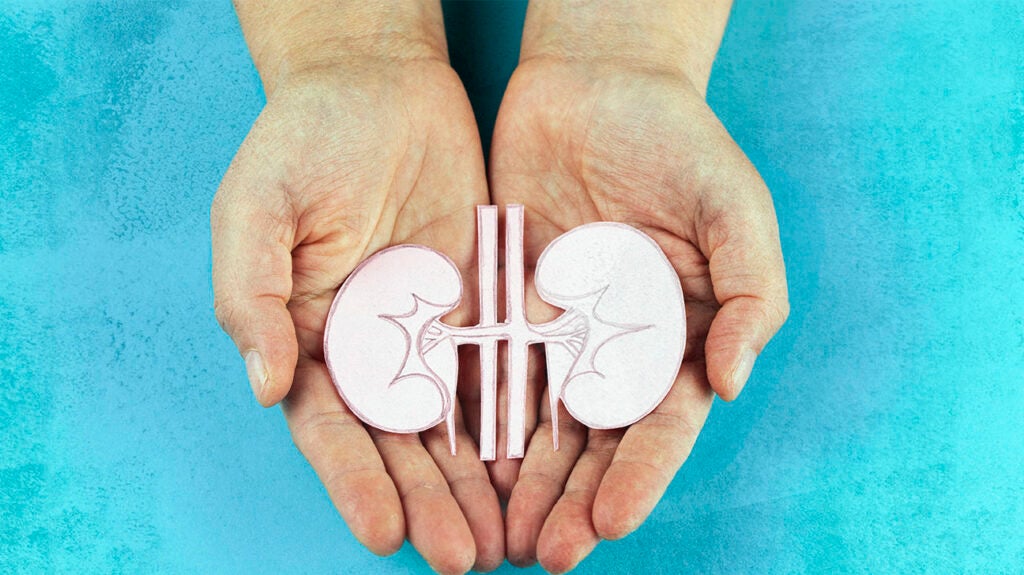May 17, 2022Body Systems & Organs / Kidney Kidney Most people have two kidneys, organs that sit in the back of your abdomen. Your kidneys’ primary function is to filter your blood. They also remove waste and balance your body’s fluids. Common kidney conditions include kidney disease, kidney infections and kidney cysts.
Blood Supply of the Kidney (Flow Chart) Diagram | Quizlet
The nephron’s primary function is to filter waste from the blood. The nephron has three major parts: the glomerulus, the Bowman’s Capsule, and the tubules, which consist of the promimal and distal tubule and the Loop of Henle. Blood enters the kidney from the renal artery and moves into the glomerulus, where filtration occurs.

Source Image: pinterest.com
Download Image
Jul 24, 2023The kidneys function in a wide variety of ways necessary for health. They excrete metabolic waste, regulate fluid and electrolyte balance, promote bone integrity, and more. These two bean-shaped organs interact with the cardiovascular system to maintain hemodynamic stability. Renal blood flow (RBF) and glomerular filtration are important aspects of sustaining proper organ functions. A delicate

Source Image: pinterest.com
Download Image
Endocrine System Anatomy and Physiology – Nurseslabs The pathway of blood flow with important structures labelled throughout the nephron. Surrounding the tube of the nephron is the vasculature of the kidney that permits blood flow through the kidney: [1] Blood flows from the arcuate artery into the afferent arteriole which brings blood into the glomerulus (a capillary bed) The efferent arteriole

Source Image: medicalnewstoday.com
Download Image
Order Of Blood Flow Through The Kidney
The pathway of blood flow with important structures labelled throughout the nephron. Surrounding the tube of the nephron is the vasculature of the kidney that permits blood flow through the kidney: [1] Blood flows from the arcuate artery into the afferent arteriole which brings blood into the glomerulus (a capillary bed) The efferent arteriole The renal arteries are part of the circulatory system. They carry large amounts of blood from the aorta (the heart’s main artery) to the kidneys. Approximately 1/2 cup of blood passes through your kidneys from the renal arteries every minute. Your kidneys are part of the urinary system. They filter blood waste products and excess fluid, which
Renal hypertension: Definition, causes, symptoms, and treatment
The kidney filters the blood. And in this video, I show how the blood gets to the kidneys, through the kidneys, and away from the kidneys.The pathway we expl Solved kidney, begin with the Aorta. Renal Vein Segmental | Chegg.com

Source Image: chegg.com
Download Image
Renal blood flow stock vector. Illustration of glomerulus – 12522874 | Basic anatomy and physiology, Kidney anatomy, Human anatomy and physiology The kidney filters the blood. And in this video, I show how the blood gets to the kidneys, through the kidneys, and away from the kidneys.The pathway we expl

Source Image: pinterest.com
Download Image
Blood Supply of the Kidney (Flow Chart) Diagram | Quizlet May 17, 2022Body Systems & Organs / Kidney Kidney Most people have two kidneys, organs that sit in the back of your abdomen. Your kidneys’ primary function is to filter your blood. They also remove waste and balance your body’s fluids. Common kidney conditions include kidney disease, kidney infections and kidney cysts.

Source Image: quizlet.com
Download Image
Endocrine System Anatomy and Physiology – Nurseslabs Jul 24, 2023The kidneys function in a wide variety of ways necessary for health. They excrete metabolic waste, regulate fluid and electrolyte balance, promote bone integrity, and more. These two bean-shaped organs interact with the cardiovascular system to maintain hemodynamic stability. Renal blood flow (RBF) and glomerular filtration are important aspects of sustaining proper organ functions. A delicate

Source Image: nurseslabs.com
Download Image
1,350 Blood Flow Kidney Royalty-Free Images, Stock Photos & Pictures | Shutterstock A capillary bed, the glomerulus, filters blood and the filtrate is captured by Bowman’s capsule. A portal system is formed when the blood flows through a second capillary bed surrounding the proximal and distal convoluted tubules and the loop of Henle. Most water and solutes are recovered by this second capillary bed.

Source Image: shutterstock.com
Download Image
Blood flow through the heart — Science Learning Hub The pathway of blood flow with important structures labelled throughout the nephron. Surrounding the tube of the nephron is the vasculature of the kidney that permits blood flow through the kidney: [1] Blood flows from the arcuate artery into the afferent arteriole which brings blood into the glomerulus (a capillary bed) The efferent arteriole
Source Image: sciencelearn.org.nz
Download Image
Capillaries stock illustration. Illustration of hormones – 46625296 The renal arteries are part of the circulatory system. They carry large amounts of blood from the aorta (the heart’s main artery) to the kidneys. Approximately 1/2 cup of blood passes through your kidneys from the renal arteries every minute. Your kidneys are part of the urinary system. They filter blood waste products and excess fluid, which

Source Image: dreamstime.com
Download Image
Renal blood flow stock vector. Illustration of glomerulus – 12522874 | Basic anatomy and physiology, Kidney anatomy, Human anatomy and physiology
Capillaries stock illustration. Illustration of hormones – 46625296 The nephron’s primary function is to filter waste from the blood. The nephron has three major parts: the glomerulus, the Bowman’s Capsule, and the tubules, which consist of the promimal and distal tubule and the Loop of Henle. Blood enters the kidney from the renal artery and moves into the glomerulus, where filtration occurs.
Endocrine System Anatomy and Physiology – Nurseslabs Blood flow through the heart — Science Learning Hub A capillary bed, the glomerulus, filters blood and the filtrate is captured by Bowman’s capsule. A portal system is formed when the blood flows through a second capillary bed surrounding the proximal and distal convoluted tubules and the loop of Henle. Most water and solutes are recovered by this second capillary bed.